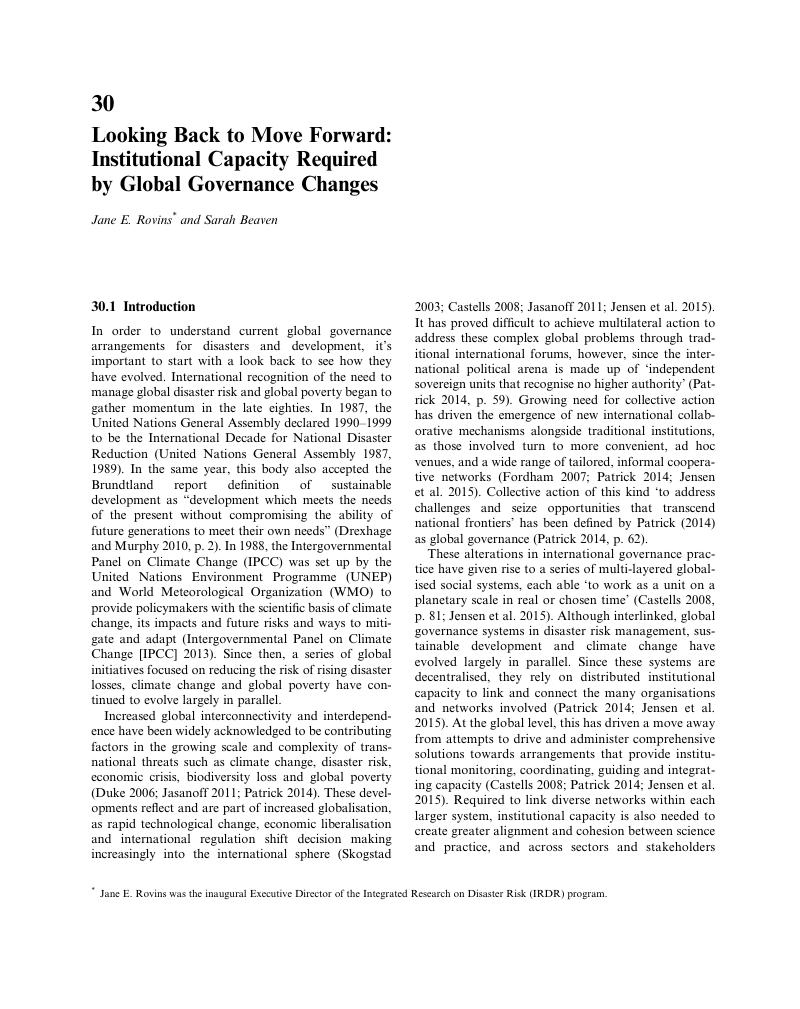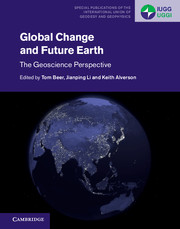Book contents
- Global Change and Future Earth
- Special Publications of the International Union of Geodesy and Geophysics Series
- Global Change and Future Earth: The Geoscience Perspective
- Copyright page
- Contents
- Contributors
- Preface
- Acknowledgments
- Abbreviations
- Part I Future Earth and Planetary Issues
- Part II Future Earth and Geodetic Issues
- Part III Future Earth and the Earth’s Fluid Environment
- Part IV Future Earth and Regions
- Part V Future Earth and Urban Environments
- Part VI Future Earth and Food Security
- Part VII Future Earth and Risk, Safety and Security
- Part VIII Climate Change and Global Change
- 28 Future Earth, Climate Change, and Global Change: Future Earth’s Ocean
- 29 Asia’s Sustainability Challenges and Future Earth
- 30 Looking Back to Move Forward: Institutional Capacity Required by Global Governance Changes
- Name Index
- Subject Index
- References
30 - Looking Back to Move Forward: Institutional Capacity Required by Global Governance Changes
from Part VIII - Climate Change and Global Change
Published online by Cambridge University Press: 22 October 2018
- Global Change and Future Earth
- Special Publications of the International Union of Geodesy and Geophysics Series
- Global Change and Future Earth: The Geoscience Perspective
- Copyright page
- Contents
- Contributors
- Preface
- Acknowledgments
- Abbreviations
- Part I Future Earth and Planetary Issues
- Part II Future Earth and Geodetic Issues
- Part III Future Earth and the Earth’s Fluid Environment
- Part IV Future Earth and Regions
- Part V Future Earth and Urban Environments
- Part VI Future Earth and Food Security
- Part VII Future Earth and Risk, Safety and Security
- Part VIII Climate Change and Global Change
- 28 Future Earth, Climate Change, and Global Change: Future Earth’s Ocean
- 29 Asia’s Sustainability Challenges and Future Earth
- 30 Looking Back to Move Forward: Institutional Capacity Required by Global Governance Changes
- Name Index
- Subject Index
- References
Summary

- Type
- Chapter
- Information
- Global Change and Future EarthThe Geoscience Perspective, pp. 398 - 409Publisher: Cambridge University PressPrint publication year: 2018



